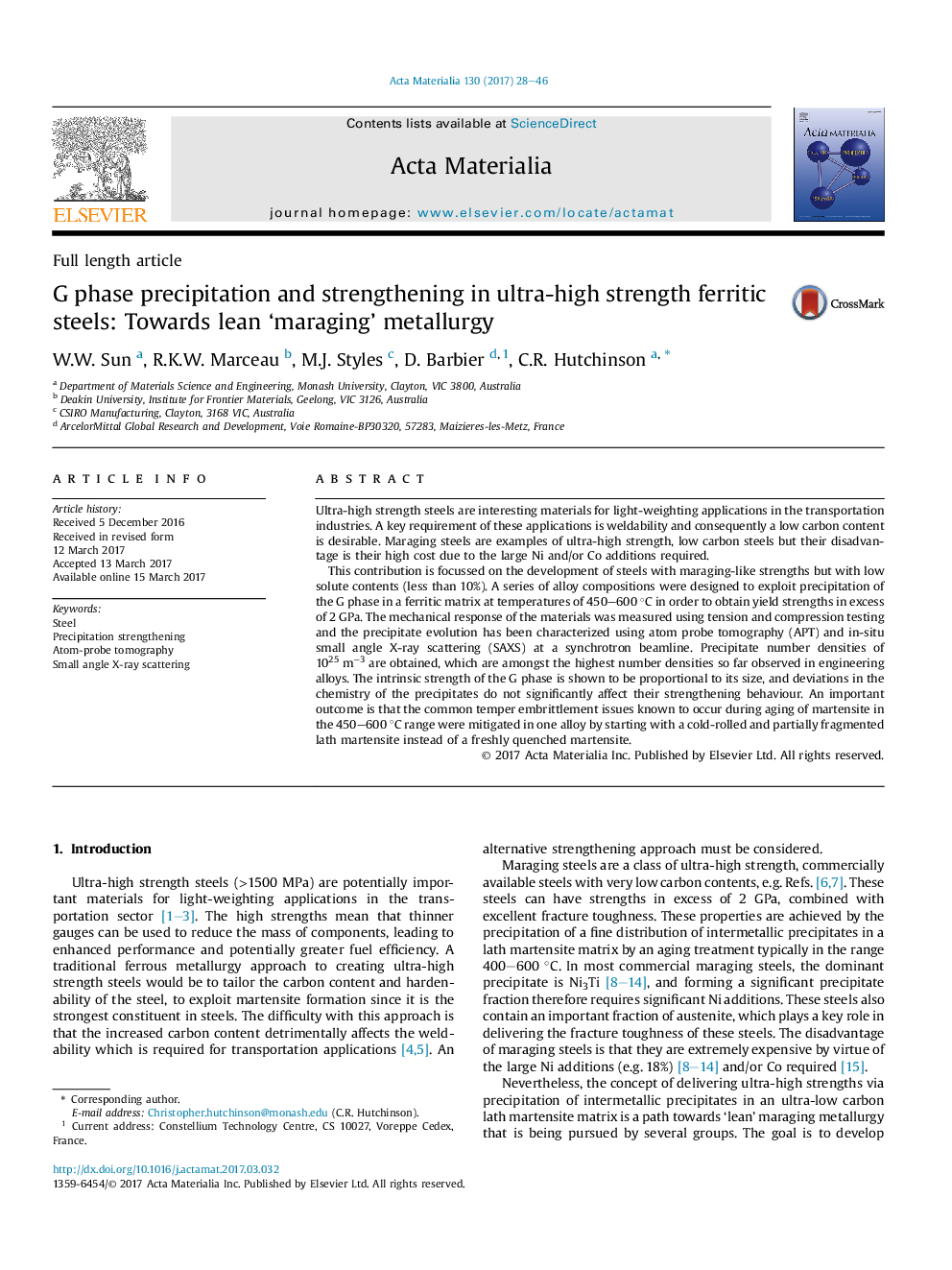| Article ID | Journal | Published Year | Pages | File Type |
|---|---|---|---|---|
| 5436017 | Acta Materialia | 2017 | 19 Pages |
Ultra-high strength steels are interesting materials for light-weighting applications in the transportation industries. A key requirement of these applications is weldability and consequently a low carbon content is desirable. Maraging steels are examples of ultra-high strength, low carbon steels but their disadvantage is their high cost due to the large Ni and/or Co additions required.This contribution is focussed on the development of steels with maraging-like strengths but with low solute contents (less than 10%). A series of alloy compositions were designed to exploit precipitation of the G phase in a ferritic matrix at temperatures of 450-600 °C in order to obtain yield strengths in excess of 2 GPa. The mechanical response of the materials was measured using tension and compression testing and the precipitate evolution has been characterized using atom probe tomography (APT) and in-situ small angle X-ray scattering (SAXS) at a synchrotron beamline. Precipitate number densities of 1025 mâ3 are obtained, which are amongst the highest number densities so far observed in engineering alloys. The intrinsic strength of the G phase is shown to be proportional to its size, and deviations in the chemistry of the precipitates do not significantly affect their strengthening behaviour. An important outcome is that the common temper embrittlement issues known to occur during aging of martensite in the 450-600 °C range were mitigated in one alloy by starting with a cold-rolled and partially fragmented lath martensite instead of a freshly quenched martensite.
Graphical abstractDownload high-res image (154KB)Download full-size image
